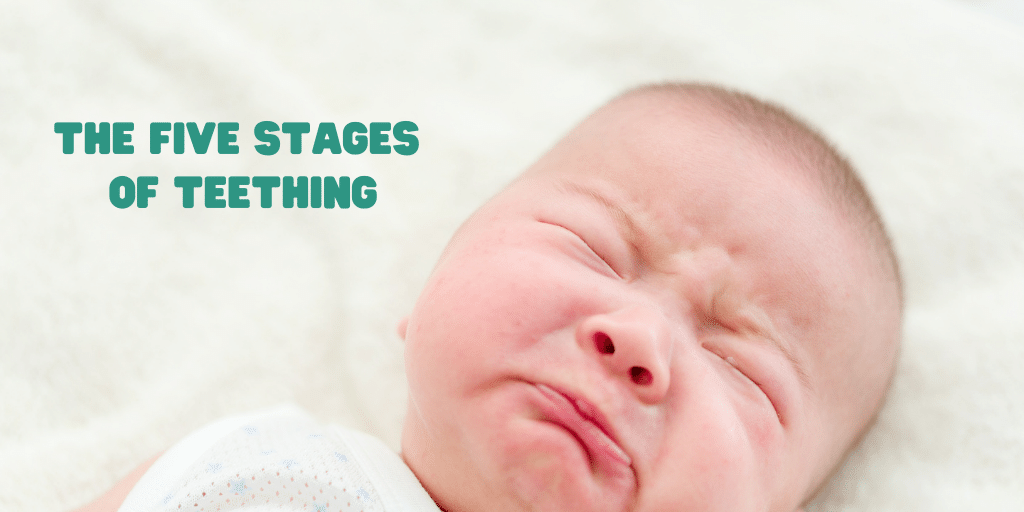A little while ago, we shared a highly humorous illustrated guide to the five stages of teething, brought to you by the wonderful writers at How to Be A Dad.
We loved this lighthearted look at the nightmare that can be teething, and we wanted to expand on it a little in this post.
Here's our own guide to the five stages of teething.
Stage One: 0-6 months
Babies are born with their full set of 'milk teeth' beneath the gums, and they can start to erupt at any time during this first period. For some babies, it can take weeks and weeks for the first tooth to appear, and for others only days. Some babies are born with teeth (yes, really!) and some won't get them until much later.
The term 'teething' usually refers to the process that takes place as the first teeth begin to push up through the gums and as a general rule babies can start to teeth before the age of six months, but teeth don't usually appear until after that age. So at stage one, you can expect a few bouts of painful teething episodes, but no teeth just yet.
Stage Two: 6 months
The second stage of teething will actually produce some teeth, making those sleepless nights and restless days a little easier to understand! After the age of six months, the incisors will start to erupt, and usually in a specific order too:
- the two middle teeth at the bottom are usually first (lower central incisors)
- followed by the two middle teeth at the top (upper central incisors)
- followed by a tooth either side of the top two (upper lateral incisors)
- followed by a tooth either side of the bottom two (lower lateral incisors)
By the time your baby is around 12-14 months old, she will have at least four teeth at the top and four at the bottom. Before they emerge, your baby will experience many bouts of teething, and sometimes it can seem that the teeth are erupting one day, before disappearing the next! It can be frustrating (for you both) but it's normal for teeth to take their time coming through.
Take a look at our teething tips for ideas on how soothe baby's sore gums.
Stage three: 10-18 months
The third stage of teething sees the eruption of the primary molar teeth, those needed for chewing and eating. They usually appear in the same order too:
- First is the two bigger teeth on either side of the mouth, towards the back at the top (upper first molars)
- followed by two bigger teeth either side at the bottom (lower first molars)
These teeth can be very painful for babies and you can expect a lot of dribbling, drooling and maybe even an upset tummy too.
Stage four: 16-22 months
The fourth stage brings with it the canine teeth (and a lot more pain and discomfort too). They usually erupt in the same order once more:
- Two teeth will appear to fill the gaps at the top between the incisors and first molars (upper canine)
- followed by two teeth at the bottom, between the incisors and molars (lower canine)
Despite the crankiness, your baby will by this point have a wonderfully bright white smile for you!
Stage five: 25-33 months
The final stage of teething (hooray!) is sometimes known as the most painful stage, as it's when the biggest teeth of all erupt through the gums. Your baby is also more of a toddler by this point too, and more likely to really let you know that she's in pain. Often at this stage teething is mistaken for being poorly (and some babies can feel dreadful during teething too) and parents can be surprised to discover new teeth when they check. The very last teeth to come through as usually in order:
- Two molars at the very back of the mouth at the bottom (lower second molar)
- followed by two molars at the backm at the top (upper second molar)
And with the end of this final stage, your baby now has 20 teeth! Amazing, huh?
We hope you found this helpful, we are not teething experts but know that a baby's sleep can be disrupted by this ongoing process and thought it would be useful. If you need additional help and advice the NHS has a useful article here.



